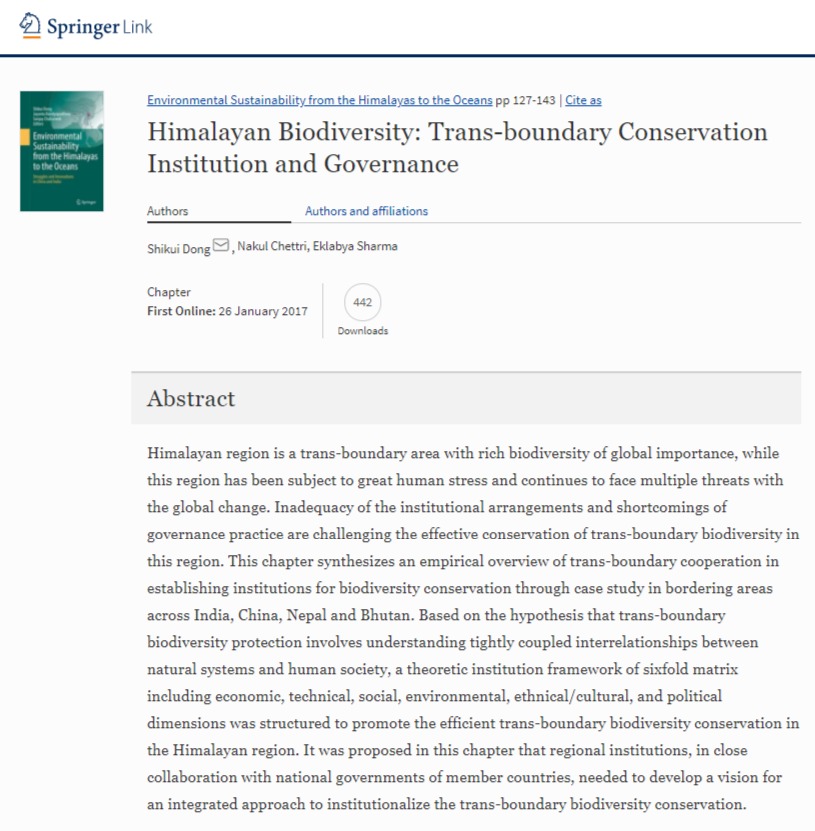
Himalayan region is a trans-boundary area with rich biodiversity of global importance, while this region has been subject to great human stress and continues to face multiple threats with the global change. Inadequacy of the institutional arrangements and shortcomings of governance practice are challenging the effective conservation of trans-boundary biodiversity in this region. This chapter synthesizes an empirical overview of trans-boundary cooperation in establishing institutions for biodiversity conservation through case study in bordering areas across India, China, Nepal and Bhutan. Based on the hypothesis that trans-boundary biodiversity protection involves understanding tightly coupled interrelationships between natural systems and human society, a theoretic institution framework of sixfold matrix including economic, technical, social, environmental, ethnical/cultural, and political dimensions was structured to promote the efficient trans-boundary biodiversity conservation in the Himalayan region. It was proposed in this chapter that regional institutions, in close collaboration with national governments of member countries, needed to develop a vision for an integrated approach to institutionalize the trans-boundary biodiversity conservation.